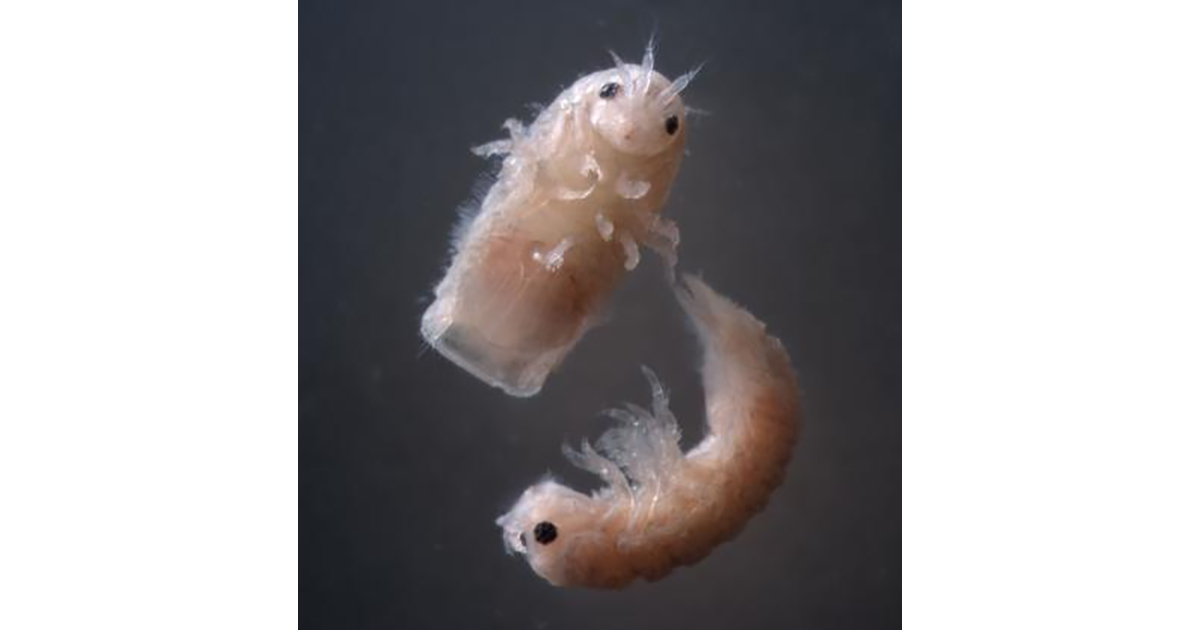The tiny group of wood-boring crustaceans known as gribble may look innocent, but their rampant feeding habits can cause widespread devastation to the wooden structures submerged in our seas.
Being the only known animal to have a sterile gut, how exactly they break down the complex lignin polymers found in wood to access the sugars had long been a mystery. But now, scientists have discovered that a special protein found in the hindgut is responsible for digestion and may hold the key to unlocking the mass production of biofuels in the future.
The research, which was published this month in Nature Communications, involved teams from the Universities of York, Portsmouth, Cambridge, and Sao Paulo. Professor Simon McQueen-Mason, from the Department of Biology at the University of York, who led the research team, said "Gribble is the only animal known to have a sterile digestive system. This makes their method for wood digestion easier to study than that of other wood-consuming creatures such as termites, which rely on thousands of gut microbes to do the digestion for them."
The team set out to gain an understanding of the digestion process in gribble and characterize the proteins found in their gut. To carry out this aspect of the research, they dissected out the gut of individual specimens and mapped out the protein sequences using transcriptomics.
Interestingly, they discovered that hemocyanins -- the same proteins used to transport oxygen in the blood of some invertebrate animals -- are responsible for modifying the lignin so that the sugars can be accessed.
"We have found that Gribble chews wood into very small pieces before using hemocyanins to disrupt the structure of lignin. GH7 enzymes, the same group of enzymes used by fungi to decompose wood, are then able to break through and release sugars," said Professor McQueen-Mason.
Lignins are particularly important for plants because they aid in the formation of cell walls, lend rigidity and do not rot easily. However, this also means that the sugars hidden behind the lignin can be hard to access, making the cheap production of biofuels in the past difficult.
The researchers then pre-treated the wood with hemocyanin before feeding it to the gribble to see if it aided them in their digestion further. Compared to the control, the activity of the sugar-degrading enzymes increased by 50-300 percent when aided by hemocyanin. Co-author of the paper, Professor Neil Bruce, from the Department of Biology, said "In the long term this discovery may be useful in reducing the amount of energy required for pre-treating wood to convert it to biofuel.”
The ever-growing pressure being placed on industry to reduce their fossil fuel emissions in favor of more sustainable low-carbon fuels means that the discovery made inside the gut of this tiny crustacean is an incredibly important one in the race to provide sustainable energy.
By Ellis Moloney
Besser, K., Malyon, G., Eborall, W., Paro da Cunha, G., Filgueiras, J., & Dowle, A. et al. (2018). Hemocyanin facilitates lignocellulose digestion by wood-boring marine crustaceans. Nature Communications, 9(1). doi: 10.1038/s41467-018-07575-2
This work was funded by the Biotechnology and Biological Sciences Research Council (BBSRC), UK (Grants BB/G016178/1 and BB/L001926/1). I.P., G.P.C., J.G.F., and E.R.A. acknowledge funding from the São Paulo Research Foundation (FAPESP), Brazil (grants 2015/13684–0 and 2017/24465–3) and from the National Council for Scientific and Technological Development (CNPq), Brazil (grants 423693/2016–6 and 312852/2014–2).



